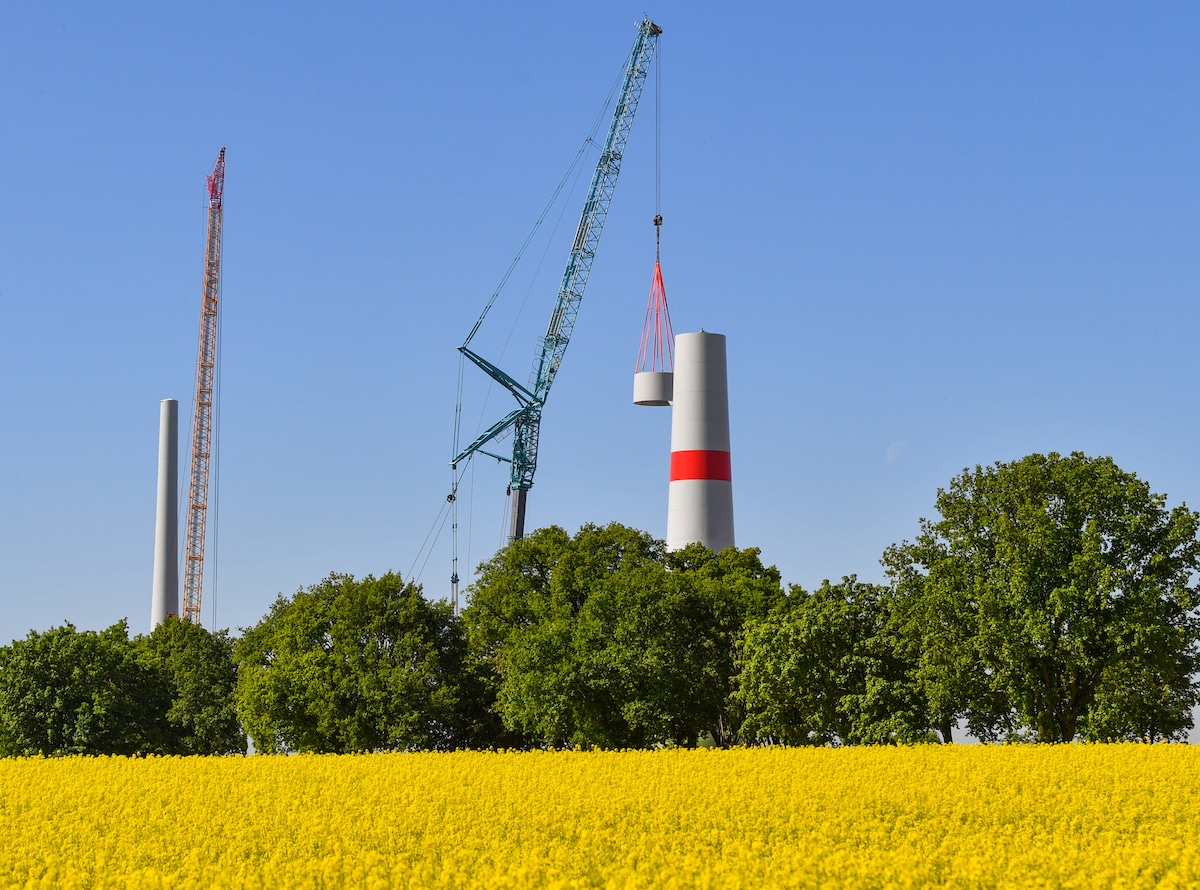
Wood Towers Can Cut Costs of Building Taller, More Efficient Wind Turbines

To be as efficient as possible, wind turbines need to be tall. But the taller the wind turbine, the more expensive it is to construct. The towers, typically made of steel or concrete, can be pricey, not to mention the embedded carbon emissions associated with these materials. Now, companies are working to make the towers of wind turbines taller, more efficient and more cost-effective by building them with wood.
Using wood for such a structure seems simple enough, yet many wind turbines are made with tubular steel or concrete, which can become increasingly expensive the taller the tower gets. But as explained by Energy.gov, “Because wind speed increases with height, taller towers enable turbines to capture more energy and generate more electricity. Winds at elevations of 30 meters (roughly 100 feet) or higher are also less turbulent.”
Most wind turbines in the U.S. are about 90 meters tall and are expected to reach an average height of 150 meters by 2035. To make this process more affordable, companies like Modvion and Stora Enso are working to use laminated timber, a material popular in sustainable building construction, for wind turbine construction.
According to Stora Enso, using wood can reduce a wind turbine’s emissions by up to 90%. Modvion has also noted that wood is lightweight, making it easier to transport and quick to assemble, and reduces manufacturing emissions by 25%, as reported by CleanTechnica.
Wood isn’t without its disadvantages, though. Concrete can be a low-cost option with little price volatility, while lumber prices have tripled since before the COVID-19 pandemic. Steel has the benefit of being highly recyclable.
In terms of the end-of-life of wood towers, Modvion has previously partnered with Enel Green Power for recycling laminated wood.
“After the technical life of the turbine is over the tower will be dismounted and the tower wall can be reused as high-strength beams for the building industry,” Modvion explained on its website.
Wood sourcing is also an issue, as deforestation continues to be a major problem for both its emissions and contribution to habitat loss. Modvion noted that it uses Scandinavian spruce for its wood wind turbines, saying this wood “is abundantly available and for which re-growth exceeds logging.” The wood is either Forest Stewardship Council- or Programme for the Endorsement of Forest Certification Schemes-certified.
A supply chain for wood wind turbine towers is not as established as concrete or steel, but could provide a more affordable option alongside advancements in working with these other materials. Spiral welding for steel and 3D-printing concrete bases can also alleviate costs for taller wind turbines.
According to Modvion, its towers will last as long as other standard wood turbine parts, about 25 to 30 years. While the first commercially produced wood towers are slated for onshore use, the company does plan to make minor adjustments to also manufacture wood wind turbines for offshore use as well.

 233k
233k  41k
41k  Subscribe
Subscribe 